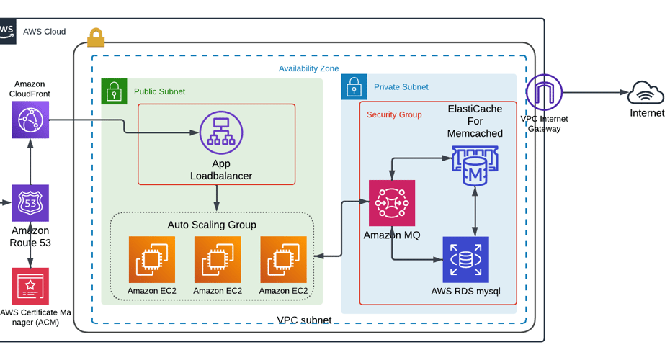Dev
3d
123

Image Credit: Dev
Building a Scalable, High-Availability Web Application on AWS with Managed Services
- The article explains the implementation and architecture of a multi-tier web application hosted on Amazon Web Services (AWS).
- This architecture leverages various AWS-managed services like RDS MySQL, Amazon MQ, and ElastiCache to enhance scalability, reliability, security and ease of management.
- Elastic Beanstalk is used to automatically deploy the front-end application that includes auto-scaling, load balancing, and fault tolerance features.
- Using Amazon CloudFront as CDN optimizes global performance by caching content closer to users from different regions, improving load times.
- The implementation process involved creating security key pairs and groups, setting up backend services, initializing the database on RDS, setting up Elastic Beanstalk environment, creating CloudFront and SSL Certifications, and testing and verification.
- Using AWS-native services strengthens security with automatic encryption, compliance controls, and helps optimize resources usage for cost efficiency.
- This architecture is an improvement from the previous design, does not include AWS-managed services.
- Building such architecture with AWS-managed services provided valuable insights into scalable architecture, automated deployment, and cloud security.
- Future enhancements could include containerizing the application, automating deployment with CI/CD pipelines, or exploring serverless options for even greater scalability and cost efficiency.
- The implementation process can be quite challenging but checking AWS Elastic Beanstalk documentation or other AWS documentation first helps in resolving some errors and issues.
Read Full Article
7 Likes
For uninterrupted reading, download the app